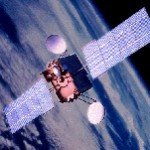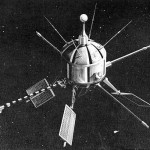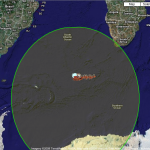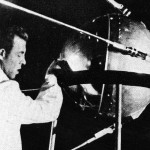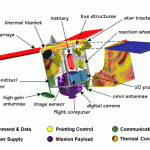Learn about
SATELLITES
You can’t see them, but they’re there. Floating over your head — hundreds of machines that are taking your picture. They also help you find your way home, make phone calls and search the Internet. Here are some amazing facts about these silent servants, called Satellites.
What is a satellite?
A satellite is defined as any object that orbits another object. For example, the Earth’s Moon is a satellite, and the Earth itself is a satellite of the Sun. Artificial satellites are machines that we place in orbit around the Earth, the Sun, or another world. Learn
more at http://www.bnsc.gov.uk/content.aspx?nid=5955.
How many satellites currently orbit Earth?
a) 1,892
b) 5,024
c) 13,587
According to http://www.n2yo.com/satellites/, there are 13,587 satellites orbiting the earth. You can browse a list by category of satellites currently in orbit, as well as view a map of the earth documenting their position in orbit here http://www.n2yo.com/?k=0&a=30), or by visiting http://science. nasa.gov/Realtime/jtrack/3d/JTrack3d.html.
How many types of satellites are there, and what do they do?
a) 2
b) 9
c) 23
d) 367
Answer: 9 (a). At http://www.satellites.spacesim.org/english/engineer/copy/index.html, you find nine categories of satellites: atmospheric studies, communications, navigation, reconnaissance, remote sensing, search and rescue, space exploration and weather. There’s also a lot of junk up there, which you can see here http://news.nationalgeographic.com/news/2006/01/0119_060119_space_junk.html.
What was the first artificial satellite launched into space?
The first man-made satellite was Sputnik 1, launched into Earth’s orbit on October 4th 1957, by the former Soviet Union. Visit http://www.nasa.gov/multimedia/imagegallery/image_feature_924.html and http://library.thinkquest.org/J0110163/sputnik_1.htm to learn more. You can also watch a YouTube video (http://www.youtube.com/watch?v=qvPzUAeWZZY&feature=related) showing the actual launch of Sputnik 1, including animation of how it appeared circling Earth.
How do satellites get electricity?
These complex machines have to generate their own power. At
http://www.thetech.org/exhibits/online/satellite/5/5.html, you can see the key parts of
a satellite and see how they generate electricity with solar panels.
Want to see a bird’s-eye view of your house?
Observation satellites are equipped with powerful cameras that beam down a constant stream of images of the ground. One of the most powerful, called the GeoEye, was just launched. Soon, we’ll be able to see even better images of just about anyplace in the world, like Bill Gates’ house (lower right), or the burned out villages in Darfur (right). Visit http://www.satellite-sightseer.com/ for a list of popular destinations, or download Google Earth http://earth.google.com/ to explore on your own. Here’s an animated video of the launch and orbit of the GeoEye satellite: http://www.beet.tv/2008/09/breaking-satell.html.


